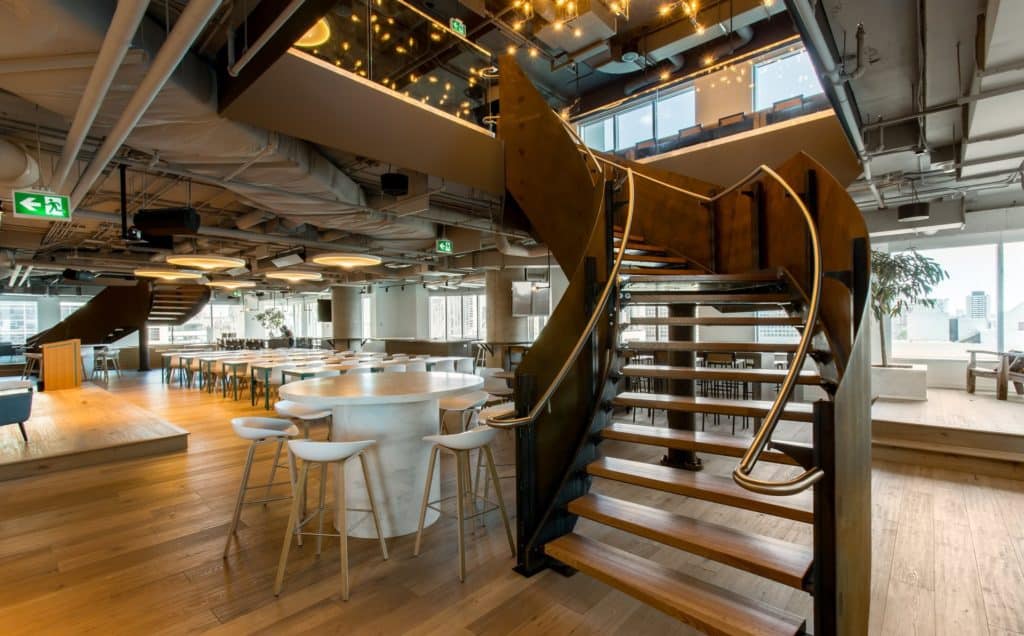This article was originally published on the Dovetail Blog.
Shopify is the world’s leading e-commerce platform with 800,000+ people from 175 countries using its platform as of 2018. Its ability to empower entrepreneurs and small businesses has pushed it to the forefront of the industry.
Shopify’s design and research team has been growing steadily over the past few years. We spoke with Erik Goyette, and other members of the Shopify design and research team, to learn more about how they approach user research and design.

What’s Shopify’s mission?
Erik: Shopify is a commerce platform that helps entrepreneurs and businesses of any size design, set up, and manage commerce stores across multiple sales channels. We provide merchants with a powerful back-office and a single view of their business. Our mission is to make commerce better for everyone so that entrepreneurs around the world can easily start a business to sell online, through social media or in person.

How does user research work across Shopify?
Erik: Shopify’s goal is to help small and large businesses become more successful, so making sure our product is easy to use is essential. We’re super passionate about understanding the problems our users have and building tools that will help them accomplish what they need to do.
One thing that maybe differentiates us from other businesses is that user research is directly embedded into teams. Being part of a team helps us researchers get a lot of deep context in a specific product area. On the other hand, researchers love discovering new things, so we also have the freedom to stray off the path and start digging into larger, more undefined problem spaces.

Could you let us know about a recent user research project?
Erik: I conducted a series of exploratory interviews and concept tests for my first project at Shopify, and thought to continue using my old method for sharing information: an atomic research database (Tomer Sharon explains the method best here).
I analyzed all of the interviews into a bunch of really interesting individual observations that were then grouped up into insights. As a researcher, I love this method because it serves as a very detailed, searchable, and well organized “second brain”.
However, as a method of sharing findings, it wasn’t very effective. The team had very specific questions to answer and though the answers were available, the atomic research format has a little more friction involved in finding them. Where a presentation or a report pushes insights to its audience, insights have to be pulled out of atomic research. As a method of sharing research, it’s much more demanding on the people who need insights to inform their decisions.
Realizing the lack of engagement with the atomic research format, I went through and turned some of the more relevant insights into stories. Those stories were then included in a little presentation.
Stories informed by data is very impactful at Shopify, so I’ll have to find out how to pair that with atomic research as a method. Ideally, atomic research doesn’t just exist as a hyper-detailed library of knowledge, but also as a driver for change.

What software does Shopify use? What have you tried in the past? What’s been working well?
Erik: We use Slack and G Suite extensively. We try to use tools that the rest of the company also uses, so we can more easily collaborate and share resources. But we’re also lucky to have the freedom to use whatever we believe will get the best results.
For interviews, we’ll often use Google Hangouts, Zoom, or Lookback. The nice thing about Google Hangouts is that participants don’t have to install anything, but it doesn’t work if you’re using Safari. Lookback is a fun one because it works on mobile and desktop. Notes you take are time-stamped to the recording, which is fantastic when reviewing.
To catalog our research, we’ve built a research library. Anyone across the company can go there to find our reports, slide decks, and recordings of our presentations.
Dovetail’s been great for our research team as well because if we’re ever curious about certain keywords or themes, we can search across multiple projects for them. With 50 researchers, there’s a lot of qualitative data available to remix and learn from. In a way, it’s become our second research library in addition to being our main tool for qualitative analysis (goodbye, spreadsheets!).

What challenges do you have with user research?
Erik: Before focusing on research, I was a UX specialist. I dabbled in designing the product (wireframes and interaction design patterns) in addition to running research initiatives. When designing, I received a lot of feedback on my work that helped me re-assess my approach. Moving to a role where my focus is now entirely user research, I’ve been reflecting on how I receive feedback and how I measure the success of my research.
If I compare research to the design and engineering disciplines, where there are very clearly defined opportunities for feedback from team members, the feedback cycle for a researcher is less structured and less frequent. We’ll get eyes on our research plan. If we’re lucky, or ask for it, we’ll get some feedback on how the research findings were presented. Questions about whether or not we could have shared the information in a better, clearer, or more memorable way are rare. Feedback on how the analysis was performed? That’s a black box for most people, and it takes a long time for even a talented researcher to understand someone else’s analysis, so the lack of feedback there is understandable.
What we’re often left with as feedback on how we’re performing is the impact of our research. If the research leads to a project (which isn’t always the case) it can be a difficult thing to measure because of the long stretch of time that user research lives at.
As a researcher, you could be conducting exploratory research on a project that won’t be prioritized until a roadmap planning meeting many months in the future. Leading up to that meeting, you could try measuring the impact of your work by paying attention to how people think about a problem. At the very least, you can feel a sense of satisfaction when something you have uncovered becomes a team’s focus. It isn’t necessarily something you use to improve on your work and methodology in the future, but it’s nice to know that there was alignment on a goal and user research played a part.

What’s changing about user research at Shopify?
Erik: As Shopify expands into new markets, we’re exploring how researchers who have a deep understanding of a product area can approach international research. Localization of content is one thing, but we also have to consider how business processes and expectations may be different in each of the countries we support.
We’ve also been checking in on how our knowledge management solutions are performing. In an effort to be more resourceful, we’re going to make sure existing user research is organized and formatted in a way that can be consumed and understood by other teams. Some research is almost timeless and will always be relevant.
Why do you do what you do?
Erik: I am absolutely in love with Shopify’s users. They’re driven, they’re smart, and they’re a wonderfully diverse group of people. Seeing someone gain independence by turning their passion into a business is so inspiring. Every day I wake up wanting to better understand how they work, what their challenges are, and uncover opportunities for us to help them reach their goals.

Any advice for new user researchers?
Erik: If you’re new to the industry or are thinking of turning user research into a career, my biggest hope is that you already have some of the foundational stuff down. The most important thing you’ll need starting off is the ability to think critically about the projects you’re working on, the questions people are asking, and your own work. You have to be able to zoom in, fuss over the details, and then zoom out to see the whole picture at a high level. If you have that down, you’ll be in a really good place to grow.
What comes afterwards is getting experience and growing your skillset. You don’t need to have first hand experience running card sorts, usability tests, interviews, surveys or a dozen workshops under your belt. You’ll learn that as you go, and improve over time.
With that in mind, it’s important to find an environment that’ll allow you to try out a bunch of research methods. For me, that environment was working at start-ups. Start-ups move at a rapid pace, and people will tend to run off and build while still holding some risky assumptions (with the best intentions). If you can find yourself in a place like that, equipped with your research mindset, you can experience a lot of growth and have a lot of influence. The skill you’ll have is the ability to test assumptions before anyone has to invest hundreds of hours into building something.
The rapid pace also means projects might wrap up relatively quickly, giving you the opportunity to learn from the launch, find the gaps, learn from them, and experiment with your research methods next time. If you’re resourceful and can handle the pace of the work, you’ll expand your skill set dramatically in a very short period of time.










